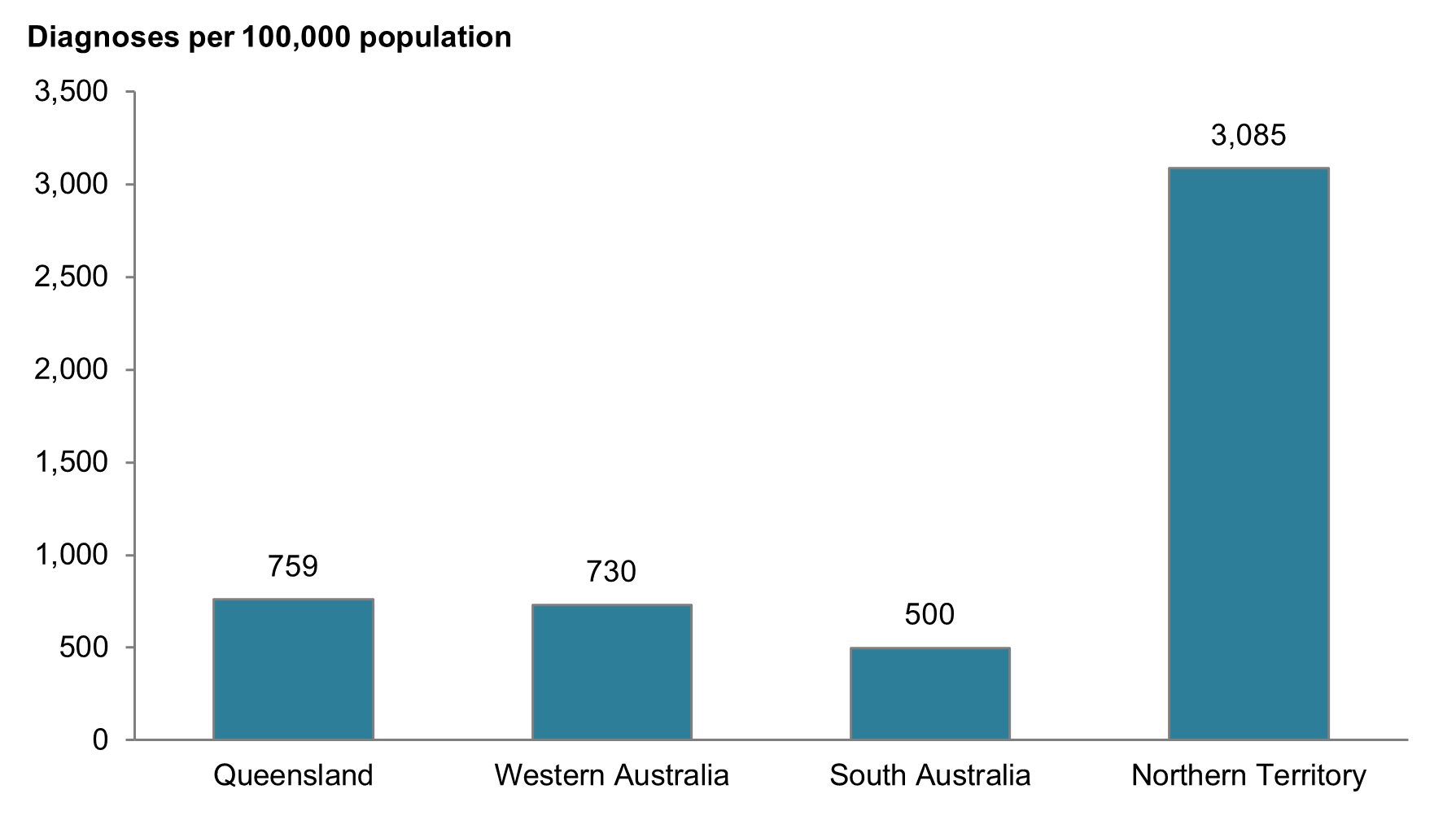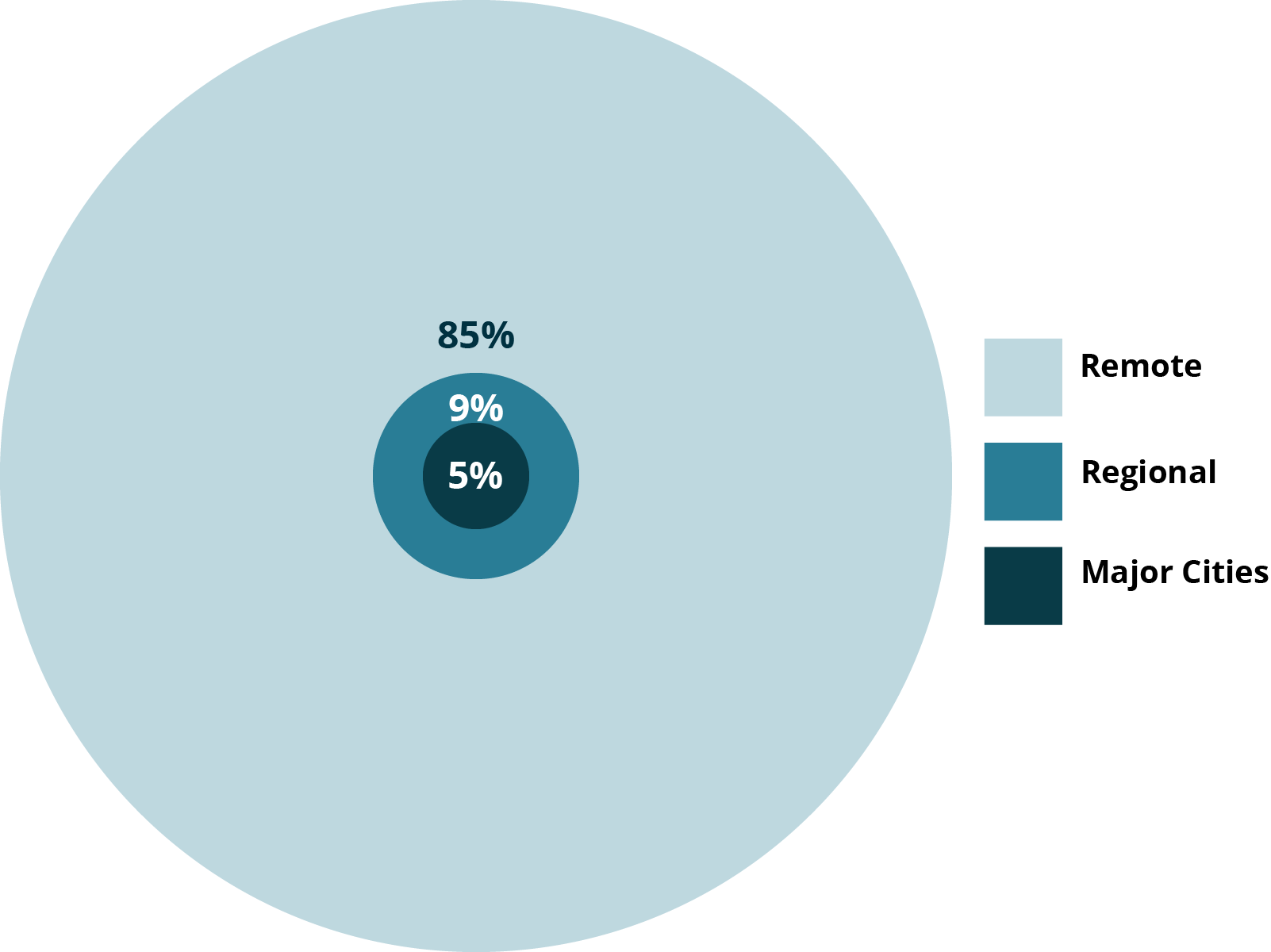Rheumatic heart disease is more common in First Nations people
At 31 December 2022, 6,954 people were recorded as having rheumatic heart disease (RHD) on registers in Queensland, Western Australia, South Australia, and the Northern Territory (Supplementary table 3.1b). Of these:
- 78% (5,424) were First Nations people
- most non-Indigenous Australians were not from a high risk country of origin
- 29% were under 25 years old – with 5 being under 5 years old
- 66% were female
- the Northern Territory and remote areas had the highest prevalence rate
- the median age on the register at the end of 2022 was 37 years (Figures 3.1, 3.2 and 3.3; Supplementary tables 3.1b, 3.2, 3.3b and 3.4)
- the prevalence of RHD increased for First Nations people and all Australians over time (Figure 3.4; Supplementary tables 3.5a and 3.5b).
Figure 3.1: Prevalence of RHD, by Indigenous status and age, as at 31 December 2022
Chart: AIHW. Source: AIHW analysis of National Rheumatic Heart Disease Data Collection.
Figure 3.2: Prevalence of RHD among First Nations people, by state or territory of management, 2022
Chart: AIHW. Source: AIHW analysis of National Rheumatic Heart Disease Data Collection.
Figure 3.3: Prevalence of RHD among First Nations people in Qld, WA, SA, and NT, by remoteness of management, 2022
Chart: AIHW. Source: AIHW analysis of National Rheumatic Heart Disease Data Collection.
Figure 3.4: Prevalence of RHD diagnoses, by Indigenous status and year, 2015 to 2022
Chart: AIHW. Source: AIHW analysis of National Rheumatic Heart Disease Data Collection.
At 31 December 2022, 142 people were recorded on the New South Wales register. This is unlikely to be representative of all Australians with RHD in New South Wales as RHD is notifiable only in those under 35 at the time of diagnosis. Of these:
- 37% (53 people) were First Nations people and 63% (89) were non-Indigenous
- most non-Indigenous people with RHD were Pacific Islanders (44)
- 7.7% (11) were under 15 years old
- 55% (78) were female
- the median age on the register at the end of 2022 was 24 years (Supplementary tables 3.1b and 3.4)
- the prevalence of RHD generally increased for First Nations people and all Australians over time, with slight fluctuations for First Nations people due to small numbers (Supplementary tables 3.5a and 3.5b).
RHDAustralia (ARF/RHD writing group) (2020) 'The 2020 Australian guideline for the prevention, diagnosis and management of acute rheumatic fever and rheumatic heart disease', 3.2 edn (2022), RHDAustralia, Menzies School of Health Research, Darwin.




